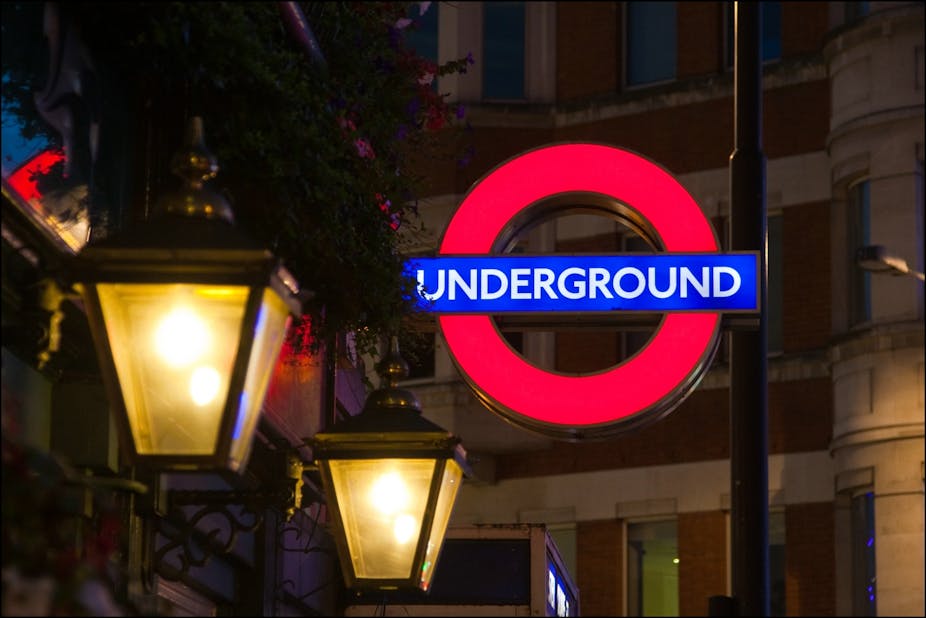London has more than 40 “ghost” underground stations that are awaiting a new function. Now, Transport for London is inviting companies to submit bids to transform them. But is this a good idea and does it matter what they are used for?
The sell-off of Brompton Road underground station earlier this year offers some interesting insight into the government’s attitude toward these heritage properties. The disused station at 206 Brompton Road was sold to a private investor for £53m in a cost-cutting effort, to increase public finances.
Heeding heritage
Brompton Road station has high value both economically and for its heritage. Located in Kensington, near Harrods, it opened in 1906 as part of the Picadilly Line and closed down in 1934 after a long period of disuse. During World War II it was used as a secret command centre for air defence operations, protecting the city from air raids, and hosting meetings with the Ministry of Defence’s high commanders. Any transformation should consider these traces of its past transport and military heritage, as well as issues of social mobility and urban infrastructure.
So, the plan to sell off forsaken tube stations for retail and real-estate development presents itself as an austerity solution. Faced with the need to pay off the national debt, the government thought that getting rid of unused assets could be a viable solution. It is paradoxical, however, that those who sold it in the name of austerity today spend millions in military operations, and the money from the sale of the station will be put back into the defence budget.
The Ministry of Defence, responsible for the building, has said: “We take our role as a custodian of the nation’s history very seriously and have been working to record the historic significance of the building.” But selling the site to a Russian billionaire to develop luxury apartments is a very peculiar way of preserving the building’s heritage in contemporary capitalism, one which values the merchandising of history and the creation of theme parks, as American architect Michael Sorkin has shown.
Other options
Most cities have buildings that have been abandoned due to economic reasons, fallen into neglect, occupied for residential purposes, or vandalised after disuse. Across the globe we find examples of these sites being converted for cultural use and real-estate development. Post offices, train stations, factories, power stations and even churches and police stations have been transformed into cultural and arts venues in recent decades, not without contention.
These strategies of post-industrial urbanism aim to bring “dead” industrial spaces in the city back to life through an injection of culture, capital or both. But concerns have also emerged about these conversions paving the way to an increase in land values and population displacement, facilitating the exclusionary process of gentrification. Clearly the way that buildings are regenerated must be thought through and it shouldn’t be a short-sighted desire for revenue driving deals.
When selling off abandoned stations such as Brompton Road, the state is selling a public asset for private residential development in one of London’s most affluent areas. In times of rapid urbanisation, the demand on the city is likely to increase and the state cannot afford the luxury of putting public buildings on sale for private use, acting as if it were a real estate agency.

Plus, the very abandonment of a public building in the first place is often an act of neglect. With the typical arch-shaped and red brick layered façade that characterises old tube stations in the British capital, the past of Brompton Road station is contained in its dark tunnels, long passageways, mysterious stairs and dusted lifts.
As sociologist Michael Keith has written, we should think about the ways in which the history of the city occupies the present. The government’s decision to allow the conversion of this space into luxury flats suggests the past is to be erased in favour of extravagant consumption and austerity-led regeneration.
Who benefits?
Discussion over using the disused tube stations cannot overlook the issue of who benefits from them. The station is in a part of London famed for the “buy to leave” phenomenon, where properties are increasingly bought and not inhabited or used.
Whereas now, the disused stations are popular among photographers, artists and tourists, and they are also used for film sets. The former station at Aldwych, for example, was featured in Atonement and V for Vendetta, and it even housed the National Gallery’s art collection during World War II. In Berlin, abandoned underground stations have been used for choreographers’ performances.
So, exclusive real-estate development is not an inevitable option and these spaces could also be converted for social and cultural use for local communities.
It is certainly a great initiative to re-use abandoned transport infrastructure and revitalise urban areas. Cultural, artistic and educational activities have the potential to trigger progressive urban, social and economic benefits.
But austerity policies can justify the privatisation of public assets and the sale of the city’s heritage and public spaces. And selling disused tube stations for private real-estate development is a not very creative move in a capital that prides itself of being among the world’s most creative cities.

